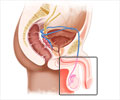- To discover new therapeutic uses of existing drugs, scientists and pharmaceutical industry employ traditional screening methods against specific desired targets.
- Traditional screening methods have certain limitations, namely that they cannot identify processes involving more than one enzyme allosteric agent.
- New drug screening method in the presence of known allosteric enzyme inhibitor found to be superior and increases the possibility of new drug discovery for several diseases.
Finding new drugs from scratch is an elaborate process and costs millions of dollars. Therefore research laboratories and pharmaceutical industry resort to screening thousands of existing compounds by traditional methods for new undiscovered activity against emerging or existing diseases and infectious agents.
Traditional screening involves testing the drug against a specific enzymatic target and analyzing observed effects such as enzyme activation or inhibition, or binding to the target protein. Depending on the observations, these compounds will be further evaluated for safety and efficacy before being used in the clinic.
However, traditional screening methods have certain limitations in that they cannot identify drugs that are capable of altering enzyme activity when more than one allosteric agent is present, thus missing out on the opportunity of identifying several such agents for further evaluation and clinical use.
Current research team has developed a method of testing compounds against specific targets, termed CoSPI by adding a known allosteric inhibitor, which helps to identify compounds that alter enzyme activity and thus improve chances of finding potential treatments for several new diseases.
- Since drug resistant tuberculosis is emerging rapidly, the team chose to test the CoSPI method on a compound hoped to be useful against Mycobacterium tuberculosis, the bacteria that causes tuberculosis.
- To test the new screening method, the team employed an enzyme present in tuberculosis (TB) bacteria known to speed up the first step in histidine synthesis- an amino acid essential for humans. They tested potential drugs/compounds on it in the presence of its substrates after the addition of a known allosteric inhibitor of this enzyme.
- During the screening, they identified an allosteric drug/compound that successfully competes with the inhibitor, drastically enhancing the activity of the enzyme. Compounds such as this allosteric activator prevent proper regulation of metabolic pathways and deplete energy from bacteria until they die.
- Importantly, since humans do not naturally have this enzyme - we obtain histidine only from our diet, it is possible that this compounds could be used to kill tuberculosis bacteria without damaging human cells, thereby opening up the possibility of a new and safe drug for tuberculosis and may be other infections as well.
"Allosteric enzymes have important functions in all living things from bacteria to humans, and now we have an improved way of finding new drugs that could work by targeting them," says Luiz Carvalho, Group leader at the Francis Crick Institute.
- All cellular metabolic pathways require enzymes (proteins that accelerate chemical reactions). These enzymes act upon their substrates (molecules that are altered by enzymes) resulting in the synthesis of substances that are useful for the body, breakdown of certain molecules and for provision of energy.
- These pathways have to be strictly regulated, and therefore the enzyme activity in these pathways have to be consequently adjusted to supply the right amount of substrate and to generate the right quantity of the desired end product.
- Allosteric compounds modify enzyme activity by making enzymes bind to their substrates either more or less efficiently, or by increasing or decreasing the rate of the reaction.
- Compounds that enhance enzyme efficiency are known as allosteric activators, while those that decrease it are known as allosteric inhibitors.
- When many allosteric compounds are present, they can either compete with one another, so that one of them has a dominant effect on enzyme activity or may complement each other to produce a greater effect.
To conclude with the remarks of one of the authors, Cesira de Chiara, a scientist at the Francis Crick Institute, "Our method allows us to find out early on how compounds interact to change enzyme activity,". We can find out more information in fewer experiments, which helps accelerate the drug discovery process."
Reference:
- João P. Pisco, Cesira de Chiara, Kamila J. Pacholarz, Acely Garza-Garcia, Roksana W. Ogrodowicz, Philip A. Walker, Perdita E. Barran, Stephen J. Smerdon, Luiz Pedro S. de Carvalho. Uncoupling conformational states from activity in an allosteric enzyme. Nature Communications, 2017; 8 (1) DOI: 10.1038/s41467-017-00224-0














